Facts & Myths about Saffron
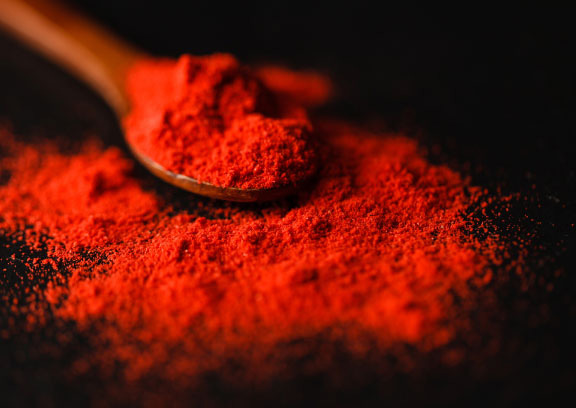
Saffron &
Powder
Many people in the West think that saffron is only available as a powder, as it is often offered only in this form. However, saffron is traditionally sold in whole filaments. This is one of the ways high-quality saffron can be recognized. Saffron filaments also have a longer shelf-life than powder.
With our emphasis on quality and transparency, Sirus Saffron prefers to offer saffron in whole filaments.
With our emphasis on quality and transparency, Sirus Saffron prefers to offer saffron in whole filaments.
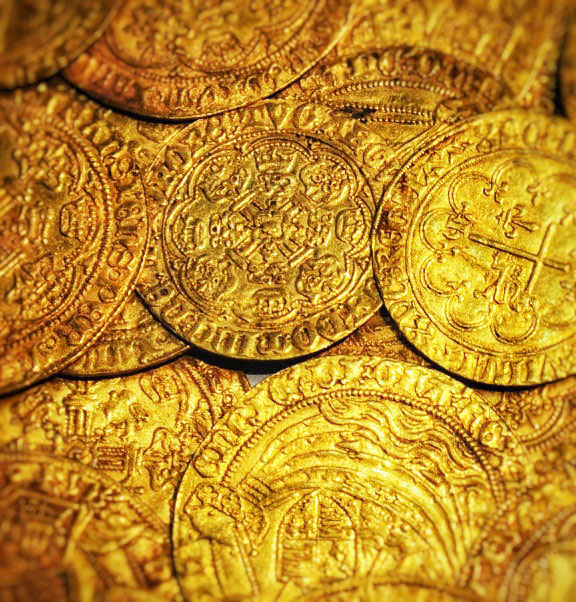
Saffron &
Gold
In ancient times, saffron was weighed by business-savvy merchants using gold, thus helping to consolidate a perception among consumers that saffron was as valuable as gold. In Western cuisine, saffron is used sparingly and carefully. Factors such as intermediary trade, packaging and shipping weigh heavily upon smaller servings, resulting in much higher prices, especially for very small quantities. One gram of good saffron sells for 10-20 francs nowadays. However, 20 grams of saffron is already significantly cheaper than the same quantity of gold.
In response to this, Sirus Saffron offers its product in two-gram packages. You can purchase this quantity without hesitation because saffron filaments have a shelf life of at least 2 years. In order to ensure fair prices, Sirus Saffron works without any intermediaries and buys its saffron directly from producers in Iran. However, saffron is undeniably a valuable spice. One thousand crocus blossoms have to be picked by hand in order to obtain two grams of saffron.
In response to this, Sirus Saffron offers its product in two-gram packages. You can purchase this quantity without hesitation because saffron filaments have a shelf life of at least 2 years. In order to ensure fair prices, Sirus Saffron works without any intermediaries and buys its saffron directly from producers in Iran. However, saffron is undeniably a valuable spice. One thousand crocus blossoms have to be picked by hand in order to obtain two grams of saffron.

Saffron &
Spain
Although saffron is indeed cultivated in Spain, the country only contributes a small share to its global production. Large quantities of saffron harvested in Iran are imported to Spain, where it is marketed worldwide as saffron packaged in Spain, without any mention of its true origin. You may have already consumed more Persian saffron than you realize. Iran accounts for over 80% of global production, especially from the eastern Khorasan region.
At Sirus Saffron, we are convinced that this region is the only acceptable source of high-quality saffron. The soil, topography, climate, and water of the local terroir ensure the special character of the crocus fields.
At Sirus Saffron, we are convinced that this region is the only acceptable source of high-quality saffron. The soil, topography, climate, and water of the local terroir ensure the special character of the crocus fields.
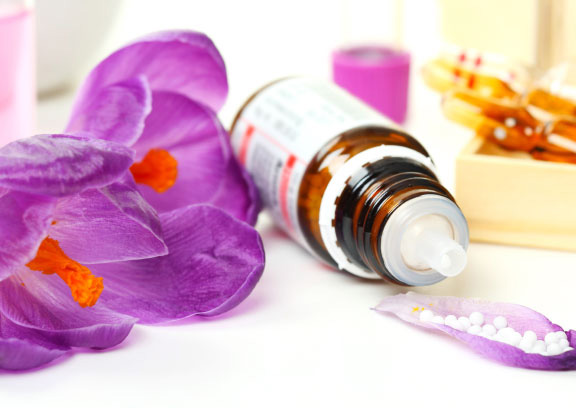
Saffron &
Healing
It is not known when exactly saffron first appeared in history. 3,500-year-old murals on the Greek island of Thera bear witness to the first medical use of saffron. Saffron is also mentioned in writing around 700 BC, in the Assyrian botanical dictionary.
Ancient kings believed in the special powers of saffron and used it to heal their wounds in times of war.
Today, saffron is used in traditional Chinese and Ayurvedic medicines, among other uses. Saffron is said to be a mild antidepressant and mood enhancer. According to a medieval proverb, "Saffron makes you laugh, but too much of it will make you laugh yourself to death." More than 15 grams at a time are apparently fatal.
As with other stimulant food products, Sirus Saffron recommends that you use saffron with moderation and only in small amounts if consuming it regularly.
Ancient kings believed in the special powers of saffron and used it to heal their wounds in times of war.
Today, saffron is used in traditional Chinese and Ayurvedic medicines, among other uses. Saffron is said to be a mild antidepressant and mood enhancer. According to a medieval proverb, "Saffron makes you laugh, but too much of it will make you laugh yourself to death." More than 15 grams at a time are apparently fatal.
As with other stimulant food products, Sirus Saffron recommends that you use saffron with moderation and only in small amounts if consuming it regularly.
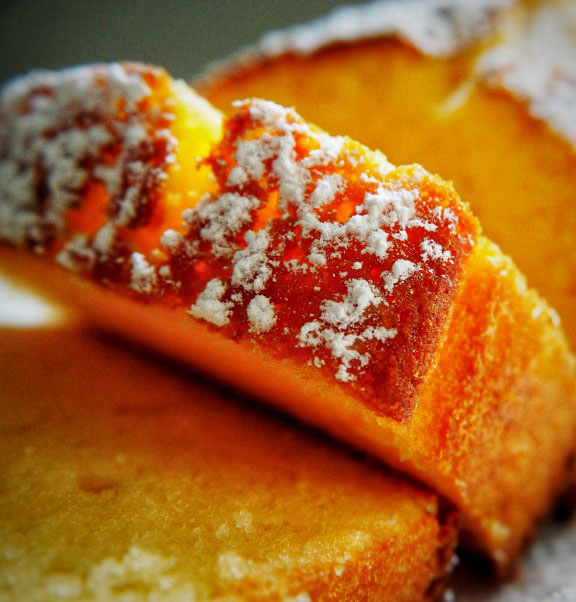
Saffron &
Yellow
"Saffron makes cakes yellow," says an old-fashioned European song. Although the color of high-quality Persian saffron is best described as crimson, it turns golden yellow when properly prepared. The scent of saffron often reminds connoisseurs of metallic honey with grassy or hay-like notes, while the taste is described as hay-like and sweet.
Sirus Saffron looks forward to hearing about your experience with saffron in the kitchen and at the bar.
Sirus Saffron looks forward to hearing about your experience with saffron in the kitchen and at the bar.
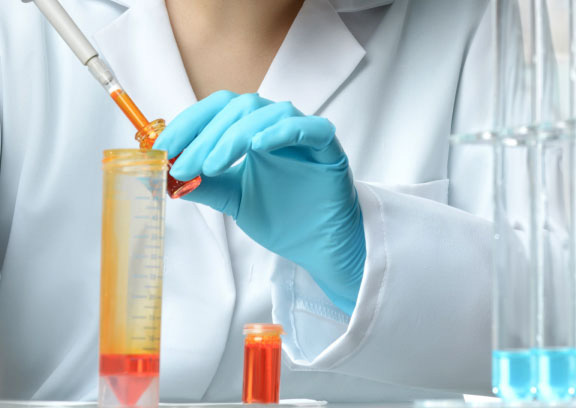
Saffron &
Quality
A special testing procedure has been developed to monitor the authenticity and quality of saffron, namely ISO 3632. According to this procedure, the following primary components are key in determining the quality of saffron:
 Crocin: responsible for its radiant coloring power
Crocin: responsible for its radiant coloring power
 Safranal: responsible for its unparalleled aroma
Safranal: responsible for its unparalleled aroma
 Picrocrocin: responsible for its characteristic taste
Picrocrocin: responsible for its characteristic taste
Saffron is divided into three quality categories according to verified values. The relevant minimum value for coloring power (crocin) needs to be >200 for category I, >170 for category II, and >120 for category III. Ask your suppliers to provide a test certificate ensuring the authenticity and quality of your saffron.
Sirus Saffron's product is tested by producers in Iran and by Swiss laboratories, and our saffron is guaranteed above the minimum requirements for category I.
 Crocin: responsible for its radiant coloring power
Crocin: responsible for its radiant coloring power
 Safranal: responsible for its unparalleled aroma
Safranal: responsible for its unparalleled aroma
 Picrocrocin: responsible for its characteristic taste
Picrocrocin: responsible for its characteristic taste
Saffron is divided into three quality categories according to verified values. The relevant minimum value for coloring power (crocin) needs to be >200 for category I, >170 for category II, and >120 for category III. Ask your suppliers to provide a test certificate ensuring the authenticity and quality of your saffron.
Sirus Saffron's product is tested by producers in Iran and by Swiss laboratories, and our saffron is guaranteed above the minimum requirements for category I.

Saffron &
Civilization
Saffron has been connecting cultures for millennia. In the West, starting in ancient Greece, saffron has been cultivated for over 3,500 years. Saffron was mentioned on an inscription in the palace of the Persian Empire at the time of Cyrus the Great (around 550 BC). Alexander the Great later brought the knowledge of this miraculous spice home with him to the West.
The famous Silk Road, connecting Persia with China and Rome, existed from 247 BC. The Chinese used saffron to refine wines and to perfume their clothes and hair. An ointment containing saffron was popular among wealthy families in ancient Rome. Later, saffron was intensively used for dyeing clothes and carpets.
Sirus Saffron has taken the inscription on Persian king Cyrus' palace to heart.
The famous Silk Road, connecting Persia with China and Rome, existed from 247 BC. The Chinese used saffron to refine wines and to perfume their clothes and hair. An ointment containing saffron was popular among wealthy families in ancient Rome. Later, saffron was intensively used for dyeing clothes and carpets.
Sirus Saffron has taken the inscription on Persian king Cyrus' palace to heart.
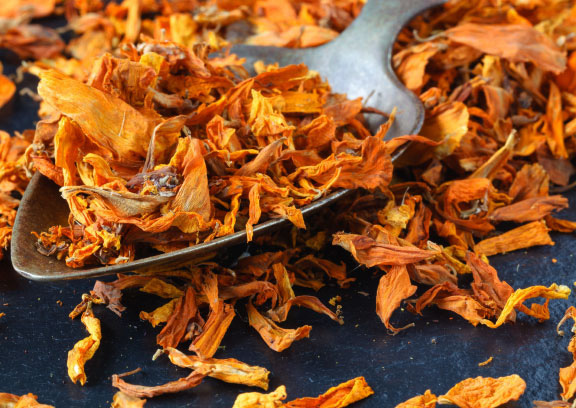
Saffron &
Adulteration
Due to its retail price, saffron is unfortunately often subject to adulteration. Oil and other liquids or sugar are added in order to increase the weight and mass of saffron. Saffron of lesser quality may be artificially dyed to make it look better. Similar looking spices such as turmeric are sometimes offered as saffron.
Sirus Saffron recommends that you use an ad-hoc test to verify authenticity, by rubbing a saffron filament between your fingers or with a handkerchief, or placing it in a little water. If the resulting color is a golden yellow, it is probably saffron.
Sirus Saffron recommends that you use an ad-hoc test to verify authenticity, by rubbing a saffron filament between your fingers or with a handkerchief, or placing it in a little water. If the resulting color is a golden yellow, it is probably saffron.
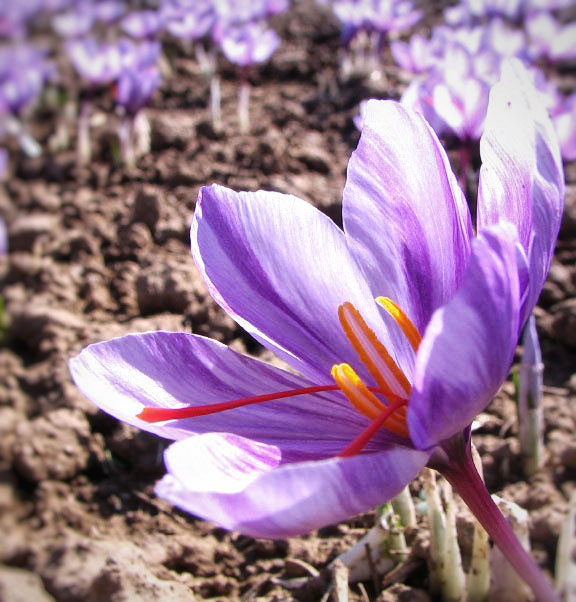
Saffron &
Flowers
Saffron is the only spice obtained from a blossomed flower. Each saffron crocus flower produces three filaments from which the spice is extracted. The flowers are hand-picked as soon as they open at dawn, as the filaments would lose their aroma in the heat of the day.
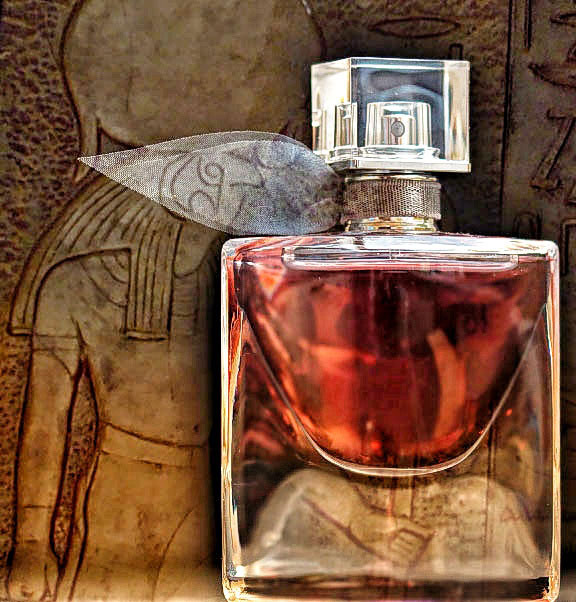
Saffron &
Spice
In ancient times, the use of saffron was not limited to seasoning dishes. Clothes and carpets were dyed with it. Cleopatra bathed in saffron to enhance her attractiveness. Love letters were written with saffron in the Middle Ages. It was even used as makeup by ladies in medieval courts because of its positive effects on the skin. Nowadays, saffron is widely used in the cosmetics industry, especially in perfumes and skin lotions. It is quite possible that you have recently come into contact with saffron without realizing at all.
